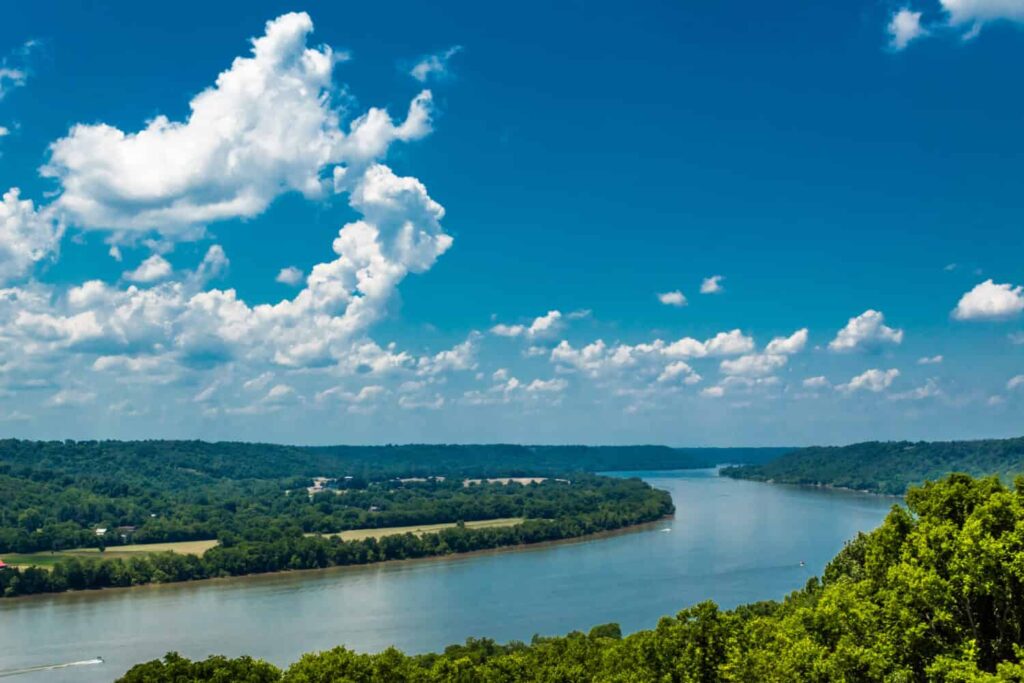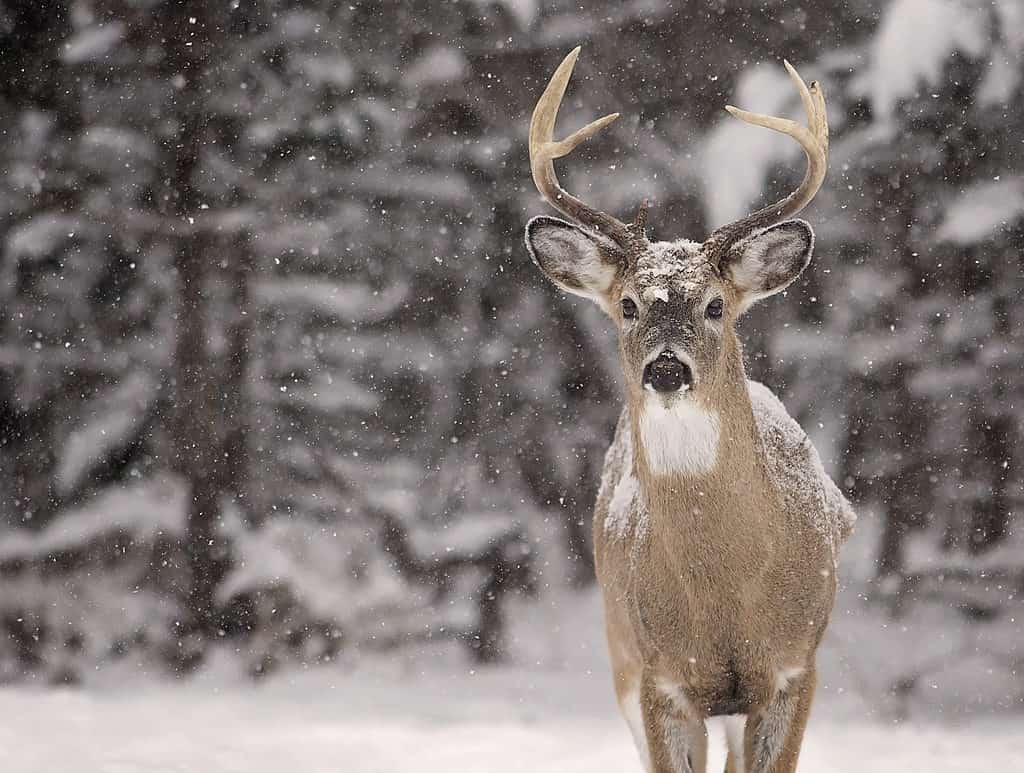Every U.S. state boasts of rich history and origin stories. In fact, most state names can give you a snapshot of their establishment and other important details. Not every state’s name origin is clear, however. For example, many people still disagree about where Arizona’s name came from and what it means, tossing around various possibilities and skepticizing the matter.
For many other states, we can easily trace the route of their names and the meanings behind them. This is the case for Ohio, which we’ll be diving into today. The state name Ohio has a clear origin, dating back to the 1650s and coined by the Iroquois Indians. This midwestern state is the 34th largest state by area, the seventh most populous, and the tenth-most densely populated state. It borders Pennsylvania, Michigan, Ontario, Canada (across Lake Erie), Indiana, Kentucky, and West Virginia.
Ohio also has a few nicknames, interesting facts, slogans, and mottos. In fact, some of Ohio’s most popular cities were named based on their rich histories. Here’s how Ohio got its name, where it derived from, and a list of its official state animals and other wildlife in the diverse-terrain state.
How Did Ohio Get Its Name?
The name Ohio came from the Iroquois Indian name “O-Y-O,” which meant “beautiful river” or “great river.” The Iroquois Indians settled between the Ohio River and Great Lakes by 1650, and the state got its name from the river when it was (much later) established in 1803. The Ohio River is 981 miles (1,579 km) long with an average depth of 24 feet. Flowing through or bordering Ohio, Illinois, Indiana, Kentucky, Pennsylvania, and West Virginia, the river features 160 fish species. It’s no wonder it was labeled such a “great river.”
While Ohio became a state on March 1, 1803, it wasn’t technically admitted into the Union until 1953, when President Dwight Eisenhower signed the documents to officially establish it as a state. Ohio was originally the southeastern part of the Northwest Territory, which also included modern-day Indiana, Illinois, Michigan, Wisconsin, and part of Minnesota.
Columbus, the capital of Ohio, was named after Christopher Columbus, who is said to have discovered the city. This controversial colonization of Ohio caused a war from 1754 to 1763 between the French and the Indians who originally settled in the region. Following the French and Indian War, the British claimed ownership of Ohio before eventually ceding control of the territory to the U.S. when it became part of the Northwest Territory.
Cleveland, another popular city in Ohio, was named after its founder, Moses Cleaveland, in the late 1700s. The city was originally spelled “Cleaveland,” like his last name, but in the early 1930s, the Cleveland Advertiser cut the letter “a” from the city name so it would fit on its masthead.

The Ohio River spans six different states.
©Corey B Stevens/Shutterstock.com
How Did Ohio Get Its Nicknames?
State nicknames can also tell you a lot about a specific state and its unique offerings or history. Ohio has many different state nicknames. Most commonly, many refer to Ohio as the “Mother of Modern Presidents,” as seven presidents were from Ohio. These presidents include Ulysses Simpson Grant, Rutherford Bichard Hayes, James Abram Garfield, Benjamin Harrison, William McKinley, William Howard Taft, and Warren Gamaliel Harding. A bonus president from Ohio is William Henry Harrison, who was born in Virginia but settled in Ohio.
Another popular nickname for Ohio is “The Buckeye State” due to its many buckeye trees across the state (which aren’t as prevalent today). The name “buckeyes” has a native origin, as the Indians believed the buckeye nuts and fruit resembled the eye of a buck, “hetuck,” or “buckeye.”
Additionally, Ohio’s state flag features a white circle with a red center, which appears like a target or bullseye. The symbol represents both the “O” in Ohio and the “Buckeye” nickname — a statewide known emblem.
Many also reference Ohio as the “Yankee State,” especially throughout the 19th century. This was because of the influx of settlers from New England during that time. Many referred to New Englanders as “Yankees,” though the reason for this is unknown. Some believe it’s because British General James Wolfe used the term in 1758 when commanding New England soldiers, while others believe it comes from the Dutch name Janke (the Dutch form of “John”).

The buckeye tree is the state tree of Ohio — which is where it got the name “The Buckeye State” from.
©Peter Turner Photography/Shutterstock.com
Ohio State Mottos and Slogans
Ohio has both a state motto and slogan. Its original motto was “Imperium in Imperio,” which is Latin for “An Empire Within an Empire.” This motto only lasted two years, as many felt it was pretentious and would give the state a poor reputation. Then came the motto, “With God, All Things Are Possible.” James Mastronardo, a 10-year-old Cincinnati resident, coined this new motto in 1958 because his mother loved the phrase. Since the motto comes from the Bible (Matthew 19:26), it sparked controversy, as the First Amendment to the U.S. Constitution protects freedom of religion. However, today, many view the motto as an optimistic phrase rather than a religious endorsement.
Ohio’s official state slogan is “Ohio, The Heart of it All.” In Ohio tourism, many used the slogan to entice visitors to the state’s many beautiful attractions. Additionally, state agencies use the tagline to establish Ohio as a great place to live, and residents use the term to express pride in their home state.
Wildlife in Ohio
The state of Ohio is home to four types of habitats (forests, prairies, wetlands, and the Great Lakes), 219 species of birds, 67 species of mammals, 45 species of snakes, and 39 species of amphibians. With 75 state parks, the state is known for its abundant wildlife.
It also boasts diverse terrain, which is home to Ohio’s ten state animals:
- State Mammal: White-tail deer (Odocoileus virginianus)
- State Bird: Cardinal (Cardinalis cardinalis)
- State Reptile: Black racer snake (Coluber constrictor constrictor)
- State Amphibian: Spotted salamander (Ambystoma maculatum)
- State Frog: Bullfrog (Lithobates catesbeianus)
- State Insect: Ladybug (Coccinellidae)
- State Pet: The shelter pet
- State Fossil: Isotelus trilobite (Isotelus)
- State Fossil Fish: Dunkleosteus or “The Dunk” (Dunkleosteus terrelli)
- State Groundhog: “Buckeye Chuck” (Marmota monax)

The white-tailed deer is the official state mammal of Ohio.
©iStock.com/Lynn_Bystrom
Throughout Ohio, within its state parks, safari parks, farms, ranches, and wildlife preserves, you can find countless mammals and different species. To get firsthand experience with Ohio wildlife, we recommend visiting the following locations:
- Cuyahoga Valley National Park
- Deer Creek State Park
- Hocking Hills State Park
- John Bryan State Park
- Malabar Farm State Park
- Maumee Bay State Park
- Salt Fork State Park
- Tar Hallow
- Wayne National Forest
The largest animals you’ll find in Ohio include the white-tailed deer and the black bear. White-tailed deer grow up to 5 feet tall and weigh up to 300 pounds. Black bears grow up to 4 feet tall and weigh up to 250 pounds.
Ohio is also home to many dangerous animals, the most threatening being venomous snakes like timber rattlesnakes, Eastern Massasauga rattlesnakes, and copperheads. The state also features snapping turtles, which can be aggressive and bite humans, causing severe wounds. Other dangerous wildlife in Ohio include coyotes, bears, foxes, and raccoons.
The three rarest animals in Ohio are the Eastern Massasauga rattlesnake and the northern long-eared bat. Though rare, these animals are not yet extinct or endangered.
As for endangered animals, Ohio has a ton, including (but not limited to):
- Indiana bat
- Golden-winged Warbler
- Piping plover
- Scioto madtom
- Clubshell mussels
- Fanshell mussels
- Pink mucket pearly mussel
- Wood turtle
- Whooping crane
- Spotted turtle
- Mitchell’s satyr butterfly
Residents should practice environmentally-friendly activities to help these species survive and avoid wasting or abusing environmental resources.
The photo featured at the top of this post is © IanSkylake17/Shutterstock.com
Thank you for reading! Have some feedback for us? Contact the AZ Animals editorial team.






